Vintage Inns, a chain within the Mitchell & Butler Retail Group and therefore brewery-owned, likes to think of itself as a mass market but decidedly high-class pub chain, certainly more up-market than JD Wetherspoons, for example, though in practice it does many of the same things. Where Wetherspoons is mostly targeted at towns, Vintage Inns has generally taken control of country pubs, and hollowed them out into huge warehouses dedicated to the art of and profit from consumption.
These pubs are fitted out in a comfortable, vaguely rustic style, targeting consumers who are at least as fond of their claret as their pint of real ale. Its menus are more expensive, its dishes slightly more sophisticated, though essentially both chains offer typical chain pub grub big menu with the odd novelty here and there – this being the era where goat’s cheese crostini and guinea fowl rub shoulders with prawn cocktail, garlic mushrooms, fish & chips, burgers and the ubiquitous steak pie. But they are still chains, so most of the food will still be made in a factory somewhere and shipped out on articulated lorries so all VIs offer an identikit dinner. My prejudices about mass-produced food notwithstanding, VI deserves an objective review for contrast, so that’s precisely what they will get.
Fowlers Farm is on the outskirts of Braintree, a market town in the middle of Essex most notably for its proximity to the busy A120 and A130, roads ferrying commuters to and from Chelmsford, Colchester, Stansted Airport and the nether reaches of Hertfordshire. Where Wetherspoons went for the old Embassy cinema in downtown Braintree, Vintage Inns chose a splendid old independent pub bang on the A120, which is possibly a good way to pick up passing trade, providing you can access the car park via two roundabouts, a garden centre and a Premier Inn budget hotel.
The conversion job is a tardis-like work of art, such that the old house which once was the pub is but a fraction of the interior capacity. Thankfully the interior has remained tasteful and bucolic, beams and all, and a far cry from the days when breweries painted on nostalgia by the yard (I remember sitting next to a bookcase in one such establishment, only to find the books had been sawn off to fit in a very narrow bookcase – the mindset of corporations is often baffling.) Well-chosen prints and framed patterns adorn the walls, blackboards offer a hearty welcome, specials and themed evenings. A real live fire was also a welcoming site, which makes you wonder why more old pubs don’t take the trouble to make them.
We were shown to our table by a friendly waitress called Linda. In fact, it was noticeable that even though they were short-staffed due to a sickness bug, the FF staff were naturally friendly, helpful and efficient – not a hint of forced attitude. For that they deserve credit, and I wish other pubs and restaurants would train their staff to follow suit. Rudeness, ignorance and incompetence seems de rigueur in many a restaurant – paying for the privilege I can well do without!
We were shown three menus: the “all day menu”, the lunchtime fixed price menu, and the Wednesday pie special menu. To keep the job simple, we both selected comfort food from the lunch menu. Our starter selections were deep fried “beer-battered” mushrooms served atop a muscular lettuce leaf with a white wave of “caramelised garlic and parsley dip”; my bacon and Stilton salad bejewelled with nuggets of apple and beetroot. The mushrooms, which had clearly taken the short hop from freezer to table via the deep fat fryer, were nicely done but tasteless, in the view of the diner. By contrast, the salad was well crafted and rather better than expected, possibly because there was more local input and pride in its execution.
My companion kept up the freezer-to-plate theme with her main course, a British standard of breaded scampi and king prawns with chips and disappointing peas, which arguably should have stayed in the freezer. It frustrates me that we have off our shores the most wonderful nephrops norvegicus (aka Norway lobster, Dublin Bay prawn, langoustine or scampi), but most of this delicacy are flogged off to be breaded and frozen, while a few lucky specimens make it to the continent to be served as a fresh and subtle delight. You can indeed buy fresh steamed or wood-roasted langoustines at restaurants like St John and The River Cafe in London, where they are treated properly and served at some expense, possibly with lovely home-made mayonnaise. The sadder fate is met by those who are breadcrumbed to within an inch of their lives, but let that pass.
I chose that fine British invention based on Italian technology, the macaroni cheese, my recipe for which is available on this site. This was curiously nouvelle, coming in a small and shallow dish, topped with a chunk of roasted tomato and more greenery. Some way down, a slick of red pepper coulis could be found, leaving the bottom of the dish somewhat watery. The macaroni cheese itself was quite acceptable, though not stupendous.
We finished with two so-so coffees, served on a single giant saucer, a first for us both, but in so doing passed on a very impressive list of traditional British desserts (though sadly also from the freezer via the microwave, I suspect.)
As someone on the neighbouring table said, you get what you pay for. Maybe so, but I still value freshness and local seasonal ingredients, neither of which you can truly buy from a chain, no matter how it brands itself.
Interesting and creditable that when I pointed out to Linda the waitress that the scampi was a freezer dish, she took it as criticism and offered to have us some more made “fresh” – which was entirely my point, since the dish was not fresh in the true sense, and another batch from the freezer would have been identical. They were not good or bad as such, they were box standard – nothing to surprise or delight. It would have been an incompetent restaurant indeed that can trash something so simple to reheat. However, Damian, the manager, took the time to come and ask what the trouble was, so we made a point of explaining that if I was being critical of anyone it was the chain, not him or his staff. I wish Damian and team were given more leeway to show their true capabilities. Why should every branch of a chain have to be identical?
Vintage Inns should take careful note that their greatest asset is unquestionably its staff, and allowing them greater licence to use their skills and crafts would simply add value to the brand. Low-cost meals are what they are, but ultimately you never stand out from the crowd while you’re doing microwave dinners.


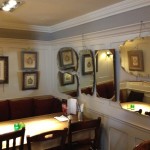


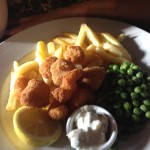
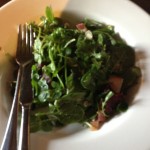

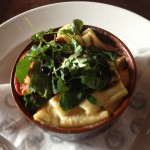
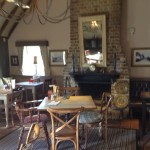
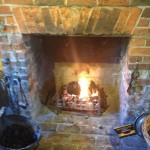
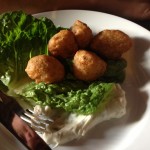

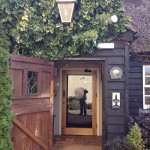

Excellent